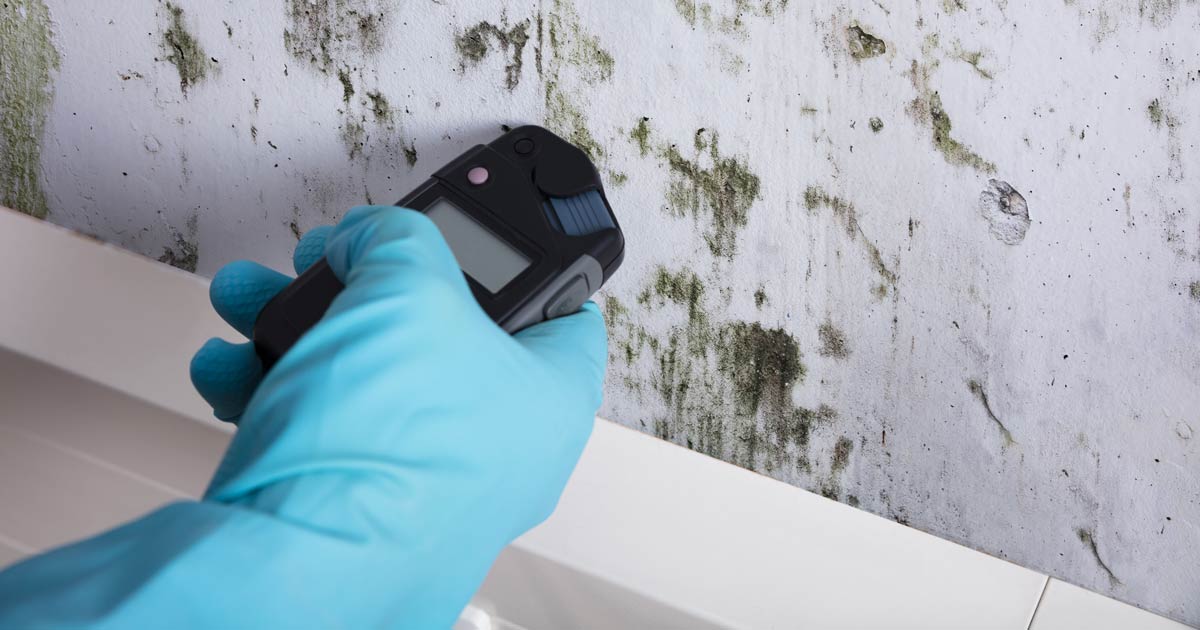Testing Air Quality After Mold Remediation
Wiki Article
Your Ultimate Guide to Post Mold And Mildew Removal Methods
In the aftermath of mold infestation, knowing how to efficiently eradicate the mold and avoid its reoccurrence is extremely important for keeping a healthy interior environment. From selecting the right cleansing and sanitizing methods to carrying out strategies for long-lasting mold prevention, each step in the remediation journey plays a vital function in guaranteeing a successful result.Recognizing Post-Mold Remediation Process
After completing the mold and mildew remediation process, it is important to comprehend the post-mold removal strategies that are required to ensure a efficient and thorough cleanup. Once the mold and mildew has actually been gotten rid of, the next step includes cleansing and disinfecting the impacted areas to avoid any type of regrowth of mold. This includes utilizing specialized cleansing agents to clean down surface areas and eliminate any kind of remaining mold and mildew spores. It is important to dry out the location totally to discourage the development of mold in the future (After mold remediation). Proper air flow and dehumidification can help in this procedure.
In addition, conducting a final assessment post-remediation is important to guarantee that all mold has been efficiently removed. If the inspection discloses any type of remaining mold and mildew, additional remediation may be essential.
Effective Cleansing and Decontaminating Approaches

Stopping Future Mold And Mildew Development

Importance of Proper Air Flow
Correct ventilation plays a critical duty in preventing wetness accumulation, a key aspect in mold and mildew growth within interior environments. Effective ventilation systems aid remove excess moisture from the air, minimizing the chances of mold spores finding the dampness they need to spread and sprout. Without sufficient air flow, indoor rooms can become a reproduction ground for mold, leading to possible health dangers and structural damage.By making certain appropriate air blood circulation, air flow systems can additionally assist in drying wet areas faster after water damages or flooding events, further deterring mold and mildew growth. After mold remediation. In areas like shower rooms, basements, cooking areas, and attic rooms where dampness degrees often tend to be greater, installing and maintaining effective ventilation systems is important in protecting against mold and mildew problems

Surveillance and Upkeep Tips
Provided the critical duty that appropriate air flow plays in preventing mold growth, it is necessary to develop effective surveillance and maintenance tips to guarantee the ongoing functionality of ventilation systems. Surveillance humidity degrees within the property is likewise critical, as high humidity can add to mold and mildew development. By remaining alert and positive hop over to these guys to the condition of air flow systems, property owners can properly reduce the risk of mold and mildew regrowth and preserve a healthy interior environment.
Final Thought
In final thought, post-mold remediation strategies are vital for ensuring a clean and secure environment. Understanding the process, executing efficient cleansing and sanitizing methods, protecting against future mold and mildew development, keeping appropriate air flow, and routine surveillance are all crucial actions in the removal procedure. By adhering to these standards, you can efficiently eliminate mold and mildew and avoid its return, promoting a healthy and balanced living or functioning room for all passengers.In the consequences of mold invasion, recognizing exactly how to successfully eliminate the mold and mildew and avoid its reoccurrence is extremely important for maintaining a healthy interior environment. Once the mold has been removed, the following step includes cleaning and disinfecting the affected areas to avoid any regrowth of mold - After mold remediation. After check out here removing visible mold development, it is vital to clean up all surfaces in the affected location to get rid of any type of remaining mold and mildew spores. To additionally improve mold and mildew avoidance procedures, it is necessary to address underlying problems that initially led to mold and mildew advancement.Given the crucial function that appropriate air flow plays in avoiding mold development, it is important to establish efficient surveillance and maintenance pointers to make certain the continued performance of ventilation systems
Report this wiki page